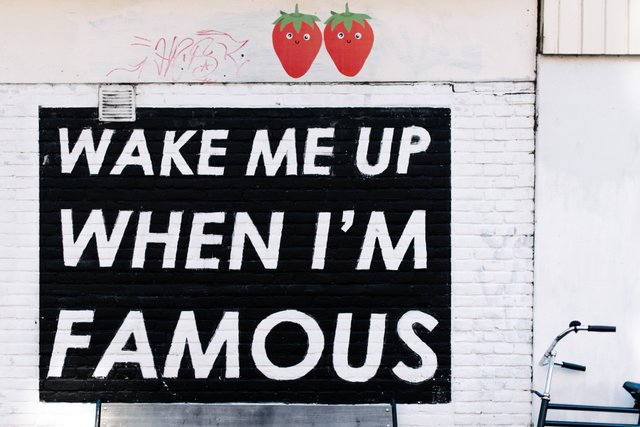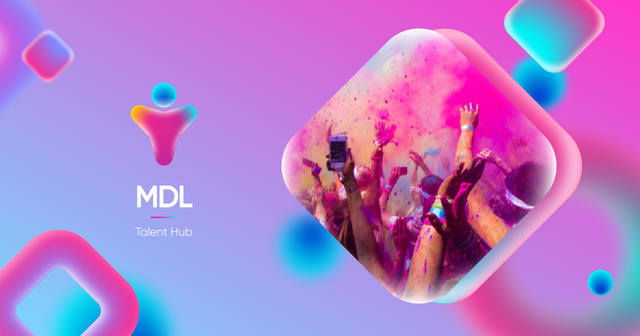Micro-Influencers > Macro-Influencers
Today is about you, yes you! The rising stars, improvers, advisors, artists, visionaries, the ambitious women and men that are innovating the entertainment industry.
In this article we are taking a look at how micro-influencers are the rising stars of the entertainment industry and why more and more brands are reaching out to micro influencers rather than the big influencers.
Let start.

Micro-influencers, what are they?
So what are micro-influencers? This article from "IZEA" gives a good complete description but briefly, here's what you need to know about good micro-influencers:
- Few amount of followers [10.000 or less]
- High engagement with fans
- High engagement from fans
- Low-cost collaboration fees
- Hard working, cautious to do things right
Why Micro > Macro
The reasons are all about authenticity. In the way that when you work with a micro influencer, you lower your spending costs per collaboration post which means it allows you to spend your budget across multiple collaborations with one micro-influencers, rather than spending it all on one post with one macro-influencer. An analysis by Markerly shows that the rise of followers usually means a decrease in the % of engagement. So based on "bang for your buck" there is a fine line to consider when looking at:
- The cost vs. audience size
- The cost vs. engagement rate
- The cost vs. (Potential) conversion rate
So when working with influencers (Micro & Macro) always consider those 3 points and compare them across all price ranges. Do this by spending an initial "Test" amount across a few low-med-high priced influencers and calculating the audience x engagement x conversion rate to find out which "sweet spot" will bring you the highest ROI.
If you find the right micro-influencer(s) for your brand, you will see ROI's skyrocket simply because repetition is key in "advertising". When done right, your "ads" or "sponsored posts" won't be perceived as an advertisement but as a genuine collaboration.
How to leverage Micro-influencers
Getting to know the Micro-influencers in your industry is crucial. This means researching who they are, finding out which ones have genuine followers and which ones have a high engagement rate (both from the side of the micro-influencer as well as from the side of their audience), finding out what their milestones are (1 year since starting a YouTube channel, birthday, 100th Instagram post, …) and making sure you make a genuine connection with those micro-influencers in order for them to appreciate your brand.
Once you do that, you can start talking about collaborations. Remember, you're in it for the long game as these influencers will stick by your brand as they grow bigger and bigger, if you treat them right and respectfully. This means:
- better collaboration prices
- Stronger connection with their audience
- More genuine sponsored posts
- Higher quality content
- Potential brand ambassador
When you reach this point, you're doing micro-influencer advertising right. Now your posts don't look like ads anymore but it will look more like your micro-influencer genuinely likes your brand and that shows in conversions from audiences who will eventually also act as micro-brand ambassadors to their friends & family. (word of mouth is insanely powerful nowadays!)
How to make sure micro-influencers are legit?

What's important when implementing your micro-influencer marketing strategy is figuring out which ones have a high potential of delivering a positive ROI and which ones don't.
There are again, a few things to consider. A few of them we have discussed earlier in what makes a good influencer, but what's equally, if not even more important, is finding out which ones have a real audience and which ones don't.
Nowadays a lot of people are fighting to stand out from the crowd.
If you ask any (micro)influencer or aspiring influencer what the hardest part is of succeeding, they will tell you that it is keeping the moral up in that beginning phase where you put in a lot of time, effort and passion, but only see small small gains, too small to actually start thinking about quitting your day-job and making a career out of your passion.
For this reason some try to boost their account to look more influential and they buy fake likes, comments, shares and more, with the goal of closing some deals with brands and earn money. Unfortunately for brands, this harms their ROI numbers and for the talents it is not a sustainable way of growing their reputation.

This is where MDL Talent Hub comes into play. MDL Talent Hub is a platform that provides a reputation system to talents (singers, dancers, actors, …), agents and brands, through blockchain technology. they are doing this to create an ecosystem that will connect previously mentioned parties to each other. The goal is to create a safe, transparent and abuse free environment in the talent-sourcing industry.
Why? Because brands are getting their brand-image damaged by unprofessional talents hired by unreliable talent-agencies and vice versa; talents are experiencing abuse, late-payments, and many other problems that are happening behind the scenes in the entertainment industry.
How does MDL Talent Hub apply to this article about Micro-Influencers?
Well, simply because MDL Talent Hub's target audience are both amateurs (People who are just getting started) as well as Micro-influencers. Micro-influencers can be talents such as dancers, singers, actors, models, … and they are all looking for safe, reliable and respectable brands and/or agencies that can deliver them a paying gig.
MDL's reputation scores will ensure that those talents can find and connect with those brands & agencies. This means that collaborations with brands can be brought to the next level with MDL Talent Hub as all parties are connected to a reputation score which will ensure that no one is being disadvantaged by an unprofessional talent or disrespectful brand.
With the obstacle of "trust" out of the way, it will be easier to set forth collaborations with Micro-Influencers. This in turn improves all aspects of working with Micro-Influencers both for the talent as for the brands therefor increasing the amount of total collaborations and increasing the success rate of those collaborations.

The one big take-away.
If there is one big take-away you need to have from this article it's that reputation is the currency of the future. We will all need to reconsider how we promote our brands and products if we want to optimize and improve our marketing strategy.
